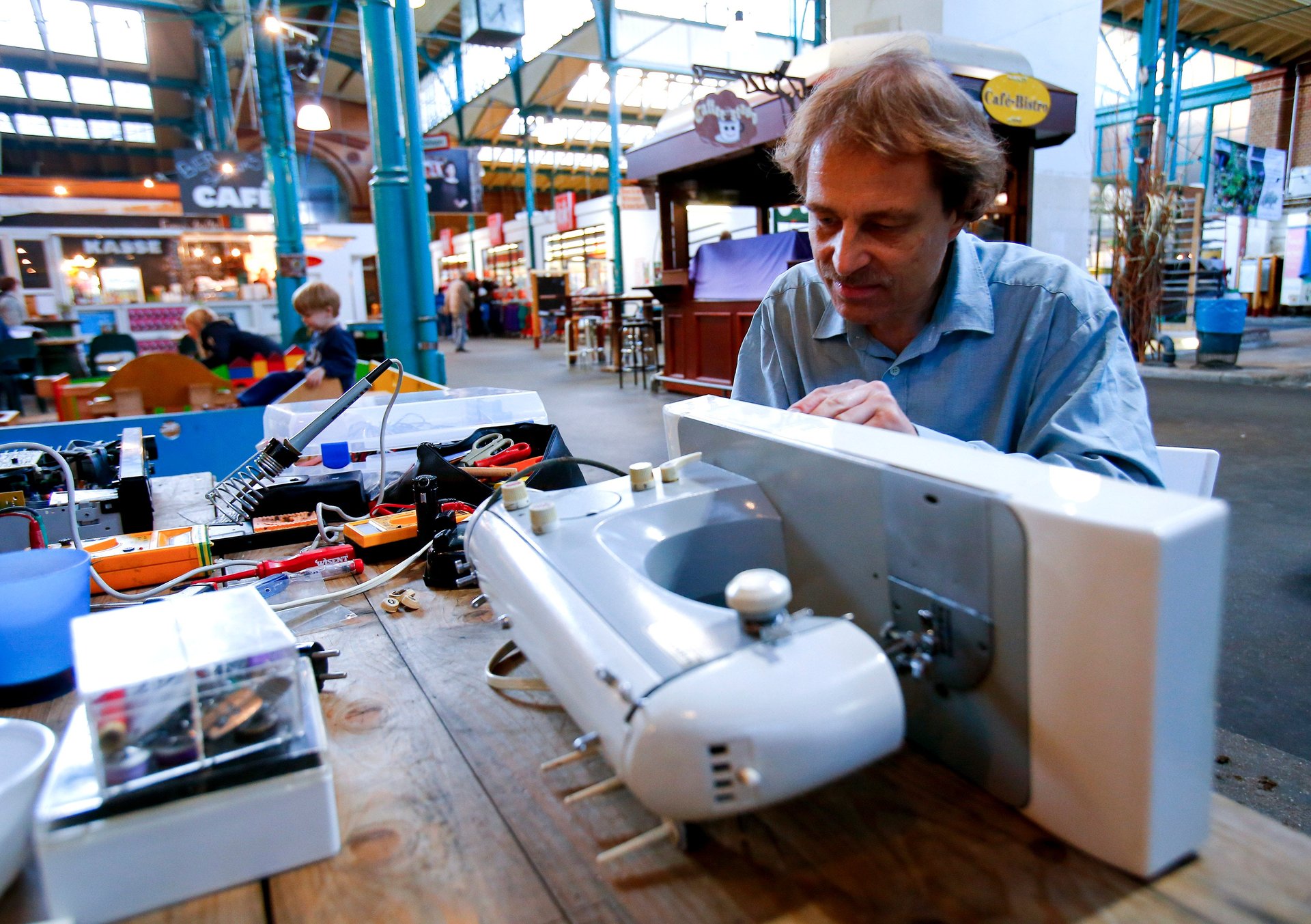Sweden gives its “fixer” citizens tax breaks for repairing, not replacing, what’s broken
At my local farmers market in upper Manhattan, one of the more popular vendors is Pop Up Repair, where people can bring their broken radios, toys, or waffle makers and get them fixed for a small fee. For all the people it draws with nowhere else to turn for basic repairs, it draws even more for the mere spectacle, and nostalgia, of seeing someone fix what’s broken.


At my local farmers market in upper Manhattan, one of the more popular vendors is Pop Up Repair, where people can bring their broken radios, toys, or waffle makers and get them fixed for a small fee. For all the people it draws with nowhere else to turn for basic repairs, it draws even more for the mere spectacle, and nostalgia, of seeing someone fix what’s broken.
Pop Up Repair is onto something: a small “fixer” movement that has gone global in the last few years, as more people see the wisdom in extending the lives of things they own rather than buying things anew. Over the past decade, “repair cafes” have formed in Europe, the US, Australia, and Sub-Sahara Africa. And since it launched in 2003, the website iFixit, a kind of wiki for repair information, has collected nearly 90,000 solutions for fixing a range of household products and computing devices.
Still, more often than not, repair shops are a breed near extinction, especially in rich countries. Trashing rather than mending our physical stuff has become so deeply engrained that we’ve extended the principle to our short-lived relationships.
Sweden, a bastion of green policy, is trying to change that. Beginning next year, Swedes who bring bicycles, clothes or shoes to repair shops will be able to pay 12% in VAT tax, instead of the standard 25%, if new legislative proposals are approved. Those who hire repair people to fix household appliances would also be able to claim a partial tax refund for the bill.
The Social Democrat and Green party coalition government is hopeful that these tax incentives will jump start a home repairs industry in Sweden, in turn creating jobs for the country’s low-skilled immigrants. In theory, encouraging Swedes not to buy foreign-made products as replacements for things they already own would also reduce carbon emissions.
Buying is often cheaper than repairing in developed countries, partly because the labor to produce imports from developing countries is cheaper than the labor involved in a local repair. Also, to fuel consumption, many products are now designed not to last. Manufacturers of complex gadgets have profited from channeling consumers into manufacturer-certified repair shops, by keeping repair information proprietary.
There is still hope for the little guy. Consumer advocates and repair people have started a “right to repair” movement to stop companies from keeping repair information at bay. As our homes fill up with internet-connected devices, we’re more at risk of drowning in a sea of broken stuff.